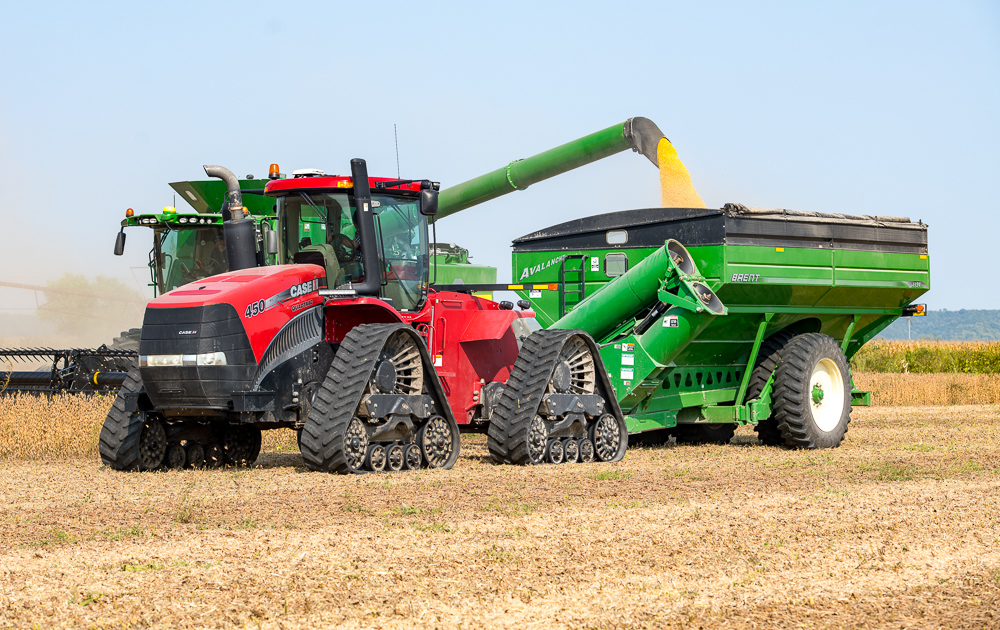
Today’s U.S. Department of Agriculture WASDE report projected soybean ending stocks at !75 million bushels. One of the lowest ending stocks in the last decade. (Photo: Joseph L. Murphy/Iowa Soybean Association)
December WASDE report crunches soy ending stocks
December 10, 2020 | Bethany Baratta
The December World Agricultural Supply and Demand Estimates (WASDE) report released today by the U.S. Department of Agriculture crunched ending stocks and raised the forecast for soybean prices.
Soybean crush for 2020/21 was increased 15 million bushels to 2.195 billion on strong crush margins and record early season crush. With exports unchanged, soybean ending stocks for 2020/21 are projected at 175 million bushels. If realized, ending stocks would be the lowest since 2013/14, according to the USDA’s report.
Soybean and soybean product prices are forecast higher this month. The U.S. season average soybean price for 2020/21 is projected at $10.55 per bushel, up 15 cents. The soybean meal price is projected at $370 per short ton, up $15 per short ton. The soybean oil price is forecast at 36 cents per pound, up 1.5 cents with cash prices reaching the highest level in the past six years.
“We saw some revisions to soybean crush and ending stocks in today’s report, but for the most part it wasn’t a major market-mover, “said Grant Kimberley, senior director of market development for the Iowa Soybean Association (ISA).
Global production
The forecast for Brazil’s soybean crop was left unchanged at 133 million metric tons. The Argentina soybean crop was revised 1 million ton lower to 50 million metric tons on fewer soybean acres.
“Lower production for Argentina leads to lower crush and soybean meal exports, supporting higher U.S. exports,” the USDA wrote in its report.
In a webinar coinciding with the report, Al Kluis of Kluis Commodity Advisors said the weather has improved in Brazil, but it’s still a concern in Argentina.
Trade tension is increasing with China as the U.S. considers new sanctions against more companies, Kluis said.
Dec. 16 webinar
For a look at what weather and increased trade tensions might mean for the soybean industry and economics on your farm, join ISA for the Soybean Economics 2021: Production, Pricing & Planning webinar on Wednesday, Dec. 16. Go here to register today!
Join Former Ambassador to China Terry Branstad, Farm Credit Services of America’s Jim Knuth and StoneX Financial Inc’s Matt Campbell for keen insights as you plan for the 2021 crop year.
“I encourage all ISA members to join the webinar to get an update on the overall U.S.-China relationship and expectations on whether the Phase 1 trade deal will continue to be implemented,” Kimberley said.
“China is the largest market for U.S. soybeans, and we have the opportunity to hear from Ambassador Branstad, who has first-hand knowledge of what’s going on in China. Knuth and Campbell will round out the webinar by talking about what it might mean for U.S. agriculture and farmers in the future.
January WASDE report
The USDA’s January report, slated for release on January 12, will provide a look at final soybean production numbers for the 2020 crop year.
“We can expect the January report to provide updates on production and maybe some adjustments to exports or ending stocks. It will give us a better idea of what we can expect the South American soybean crop to look like,” Kimberley said.
Back